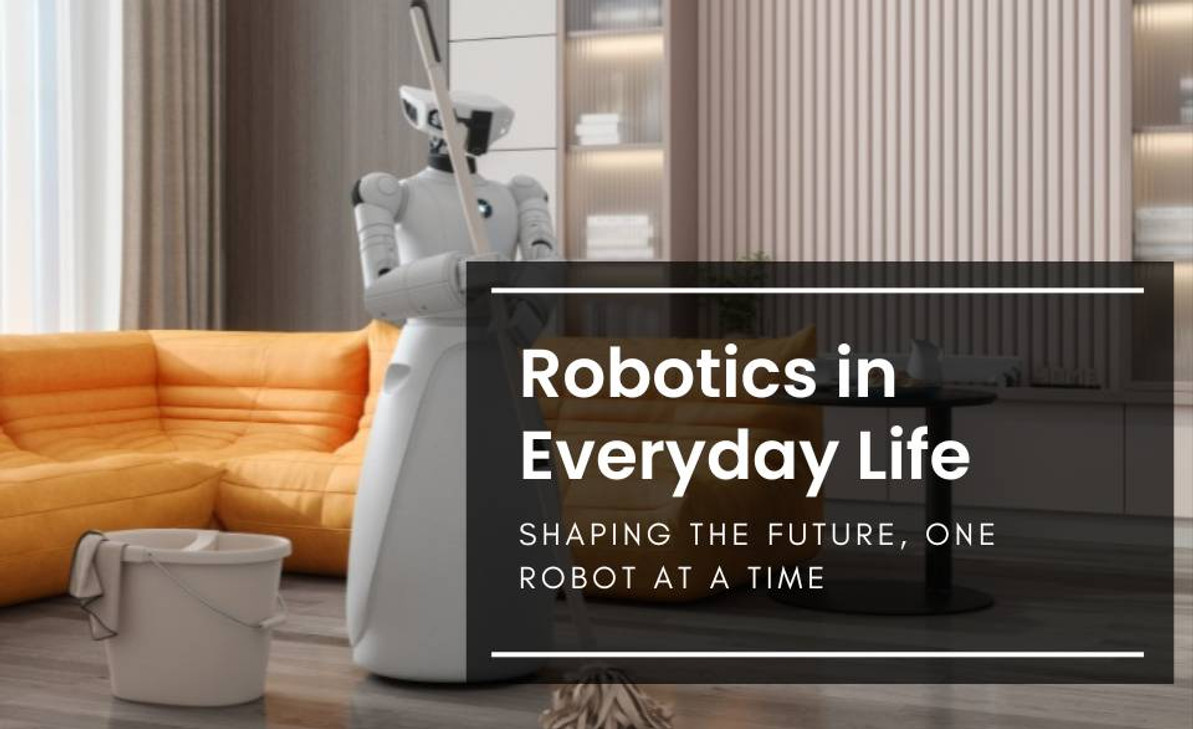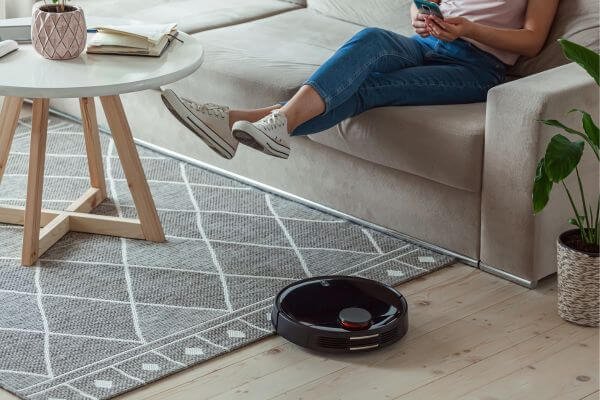Robotics in Everyday Life; Shaping the Future, One Robot at a Time
0101, 0102, no these are not their names, they are called Ella, Roomba or Kobi. I am talking about robots. They have so casually entered our daily life that they get a real name, like me and you. Today I want to explore the life story of a few of these robots quietly wheeling alongside us. In this exploration, we delve into how robots have seamlessly integrated into various aspects of our lives. From automating household chores to revolutionizing healthcare, education, retail, and transportation, these machines are reshaping the way we live, work, and interact.
Let's review some of the fields where robots are now a thing of the past:
Domestic Chores
Robotic Vacuum Cleaners: Revolutionizing Home Cleaning
How Do Robot Vacuum Cleaners Work?
Robotic vacuum cleaners, robovacs or Roombas are innovative devices designed to automate the process of floor cleaning in homes. These compact and autonomous gadgets use a combination of sensors, brushes, and suction mechanisms to navigate through spaces and effectively remove dust, dirt, and debris from various floor surfaces.
- Sensors: Robotic vacuum cleaners are equipped with sensors that detect obstacles, drop-offs, and changes in floor surfaces. These sensors enable the device to navigate around furniture and other items in a room.
- Brushes and Suction: Most robovacs have rotating brushes and a suction mechanism. The brushes agitate and lift debris, while the suction mechanism draws in and collects the dirt, ensuring thorough cleaning.
- Mapping Technology: Advanced models often utilize mapping technology to create a virtual map of the cleaning area. This enhances efficiency by allowing the vacuum to follow a systematic cleaning pattern, covering the entire space.
What's Interesting About Them:
- Autonomous Operation: One of the most fascinating aspects of robovacs is their ability to operate autonomously. Users can schedule cleaning sessions or let the device clean on-demand without manual intervention.
- Smart Home Integration: Many robotic vacuum cleaners can be integrated with smart home systems. This means they can be controlled through voice commands or smartphone apps, providing users with convenient and remote control over their cleaning routines.
- Self-Charging Capability: Robotic vacuum cleaners often feature self-charging capabilities. When their battery levels are low, they autonomously return to their charging dock, ensuring they are always ready for the next cleaning session.
Weak Point:
While robotic vacuum cleaners have evolved to be highly effective, they do have some limitations. One notable weak point is their capacity to handle large debris. Some models may struggle with larger items or piles of debris, requiring manual intervention to clear such obstacles.
What's Next:
The future of robotic vacuum cleaners involves further advancements in artificial intelligence, machine learning, and sensor technologies. Anticipate improved navigation systems, better adaptability to complex environments, and enhanced mapping capabilities.
Robotic Lawn Mowers: Transforming Lawn Care
How Do Robotic Lawn Mowers Work?
Robotic lawn mowers are cutting-edge devices designed to automate the process of lawn maintenance. These autonomous gadgets utilize a combination of advanced technologies to navigate and mow grass effectively.
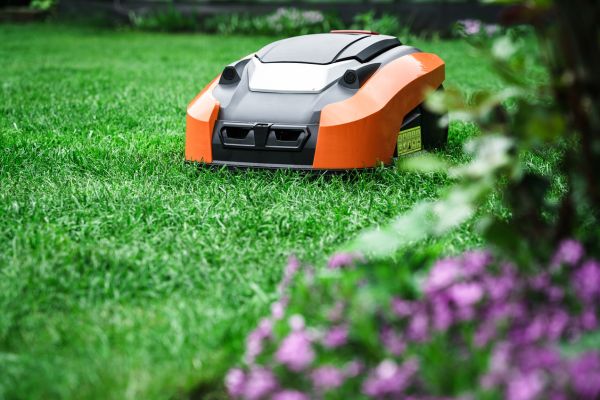
- Navigation Systems: Robotic lawn mowers employ navigation systems such as GPS, sensors, and boundary wires to create a virtual map of the lawn. This enables them to navigate and mow in a systematic and efficient manner.
- Boundary Setting: Users define the mowing area by installing a boundary wire around the lawn perimeter. This wire serves as a virtual fence, guiding the robotic mower and preventing it from straying into non-designated areas.
- Autonomous Operation: Once the boundaries are set, the robotic mower operates autonomously. It follows a predetermined mowing pattern, adjusting to the lawn's shape and terrain. Some models even feature rain sensors, allowing them to pause mowing during wet conditions.
- Mulching Capability: Many robotic lawn mowers are equipped with mulching capabilities. As they mow, they finely chop grass clippings, promoting rapid decomposition and acting as a natural fertilizer for the lawn.
What's Interesting About Them?
- Quiet Operation: Robotic lawn mowers operate quietly, minimizing noise pollution. This allows for mowing during various hours without disturbing the peace, making them a considerate choice for residential areas.
- Adaptive Cutting Patterns: Some models adapt their cutting patterns based on grass growth rates. This ensures efficient coverage and promotes a consistently well-groomed lawn.
- Security Features: To prevent theft, robotic lawn mowers often come with security features such as PIN codes and alarms. Unauthorized movement triggers an alarm, adding an extra layer of protection.
Weak Point:
A notable weak point for robotic lawn mowers is their struggle with tall or dense grass. While they excel in regular maintenance, they may face challenges with overgrown areas, requiring users to mow manually before introducing the robotic mower.
What's Next:
The future of robotic lawn mowers involves continued advancements in navigation systems, battery life, and cutting efficiency. Expect improved adaptability to complex lawn shapes, enhanced obstacle avoidance capabilities, and integration with smart home systems for seamless control and monitoring.
Healthcare
Surgical Robots: Precision and Minimally Invasive Procedures
How Do Surgical Robots Work?
Surgical robots, exemplified by the da Vinci Surgical System, represent a revolutionary advancement in medical technology. These robots are designed to assist surgeons in performing precise and minimally invasive surgeries.
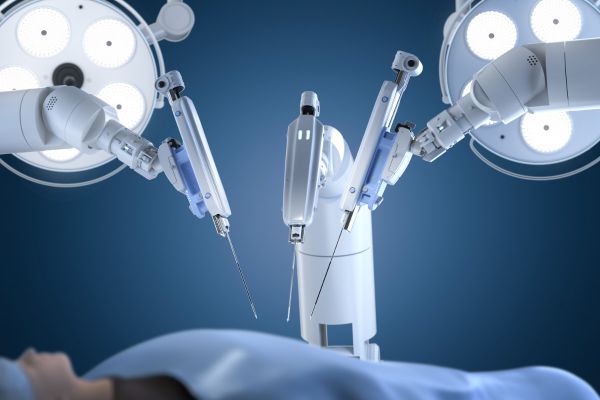
- Robotic Arms and Instruments: The da Vinci Surgical System consists of robotic arms equipped with surgical instruments. These arms are controlled by the surgeon from a console, allowing for precise movements and actions.
- High-Resolution Imaging: Surgical robots are equipped with high-resolution cameras that provide a detailed, 3D view of the surgical site. This enhances the surgeon's visibility and accuracy during the procedure.
- Telemanipulation: The surgeon sits at a console and manipulates the robotic arms using hand and foot controls. The system translates the surgeon's movements into precise actions by the robotic instruments inside the patient's body.
- Enhanced Dexterity: Surgical robots often have instruments with greater dexterity than the human hand, allowing for intricate movements and improved control in delicate procedures.
What's Interesting About Them?
- Minimally Invasive Surgery: One of the most significant benefits of surgical robots is their contribution to minimally invasive surgery. Smaller incisions result in reduced pain, faster recovery times, and diminished scarring for patients.
- Enhanced Precision: Surgical robots offer unparalleled precision, allowing surgeons to perform complex procedures with greater accuracy. This precision is especially crucial in delicate surgeries or when operating in tight spaces.
- Remote Surgery Possibility: In some cases, surgical robots enable remote surgery. This means that a surgeon can operate on a patient located in a different geographic location, opening up possibilities for expertise-sharing and specialized care.
Weak Point:
A notable weak point is the high cost associated with acquiring and maintaining surgical robots. The initial investment, ongoing maintenance, and training for medical professionals contribute to the overall expenses, making these systems accessible primarily to well-funded medical institutions.
What's Next:
The future of surgical robots involves advancements in artificial intelligence, machine learning, and haptic feedback technology. Anticipate improved autonomy, more intuitive controls for surgeons, and increased adaptability to a wider range of surgical procedures. Additionally, efforts may focus on making these advanced surgical technologies more cost-effective and accessible to a broader spectrum of healthcare facilities.
Education
Educational Robots: Supporting Language Learning and Interaction
How Do Educational Robots Work?
Robots used as educational tools to assist with learning languages play a crucial role in engaging students and facilitating language acquisition. These robots leverage interactive technologies to create dynamic and immersive language learning experiences.
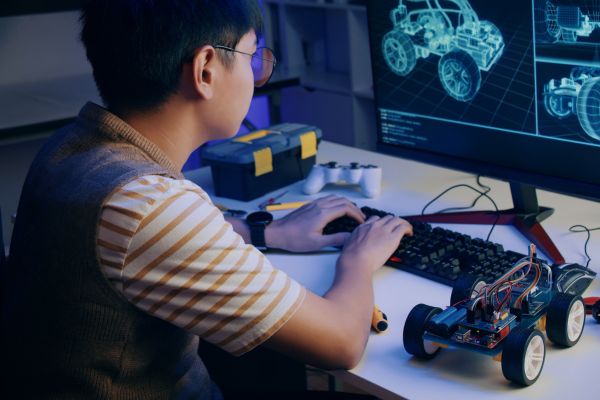
- Interactive Programs: Educational robots are programmed with interactive language-learning programs. These programs often include games, quizzes, and activities that cater to various language proficiency levels.
- Speech Recognition Technology: Many language-learning robots utilize speech recognition technology. This enables them to understand and assess students' pronunciation, providing real-time feedback for improvement.
- Conversation Practice: Some robots are designed to engage students in conversation, offering a practical and interactive approach to language learning. They may use pre-programmed dialogues or respond dynamically to students' input.
- Multisensory Learning: Educational robots incorporate multisensory learning experiences, combining visual, auditory, and tactile stimuli. This approach enhances the retention of language concepts and promotes a holistic understanding.
What's Interesting About Them:
- Personalized Learning: Language-learning robots often adapt to individual learning styles and progress. They can provide customized exercises, challenges, and feedback, catering to the unique needs of each student.
- Engaging and Motivating: The interactive and playful nature of these robots makes language learning more enjoyable for students. Gamified elements and interactive conversations create a positive and motivating learning environment.
- Cultural Context Integration: Some educational robots incorporate cultural context into language lessons. This includes exposure to native accents, cultural nuances, and real-life scenarios, providing a more comprehensive language-learning experience.
Weak Point:
A potential weak point lies in the limitations of conversation complexity. While these robots are effective for basic and intermediate language learning, they may face challenges in handling highly nuanced or complex linguistic interactions that require deep cultural understanding.
What's Next:
The future of language-learning robots involves advancements in natural language processing, emotional intelligence, and cultural sensitivity. Expect more sophisticated dialogue capabilities, improved adaptability to individual learning styles, and integration with virtual reality for immersive language experiences. Additionally, collaboration with human language educators and continuous updates to reflect evolving linguistic trends will likely be emphasized.
Retail
Warehouse Robots: Streamlining Picking and Packing Processes
How Do Warehouse Robots Work?
Robots deployed in warehouses to automate the picking and packing process have revolutionized logistics and supply chain operations. These robots are designed to efficiently navigate warehouse environments, locate items, and contribute to the seamless fulfillment of orders.

- Autonomous Navigation: Warehouse robots are equipped with sensors, cameras, and mapping technologies that enable them to navigate autonomously within the warehouse. They can avoid obstacles, optimize routes, and efficiently move around the facility.
- Inventory Management Integration: These robots are often integrated with inventory management systems. They receive real-time data on stock levels and order requirements, allowing them to prioritize tasks and streamline the picking and packing process.
- Collaboration with Human Workers: In some setups, warehouse robots work collaboratively with human workers. They may transport shelves or containers to human pickers, reducing the physical strain on workers and improving overall efficiency.
- Picking and Packing Algorithms: Warehouse robots use advanced algorithms to determine the most efficient way to pick items from shelves, pack them into containers, and prepare them for shipping. These algorithms optimize the overall order fulfillment process.
What's Interesting About Them:
- Increased Efficiency and Speed: Warehouse robots significantly enhance the speed and efficiency of order fulfillment. They can work around the clock without fatigue, contributing to faster processing times and reduced order delivery durations.
- Adaptability to Dynamic Environments: These robots demonstrate adaptability to dynamic warehouse environments. They can adjust their routes and tasks based on changes in inventory, demand, or the warehouse layout, ensuring optimal performance.
- Reduced Error Rates: Automation with warehouse robots minimizes the likelihood of errors in picking and packing processes. The precision of these robots leads to higher accuracy levels, reducing the occurrence of shipping mistakes.
Weak Point:
A notable weak point is the initial cost of implementing warehouse robotic systems. While they offer long-term efficiency gains, the upfront investment in acquiring and integrating these technologies may pose a barrier for some smaller businesses.
What's Next:
The future of warehouse robots involves advancements in machine learning, computer vision, and robotics. Expect improved capabilities for handling a wider range of products, enhanced collaboration with human workers, and increased integration with other smart warehouse technologies. Additionally, developments in robotics-as-a-service (RaaS) models may make these technologies more accessible to a broader range of businesses.
Robot Cafés: Blending Technology with Culinary Experiences
How Do Robot Cafés Work?
Robot cafés represent a fusion of technology and hospitality, offering a unique dining experience where robots play a significant role in the service and preparation of food and beverages.
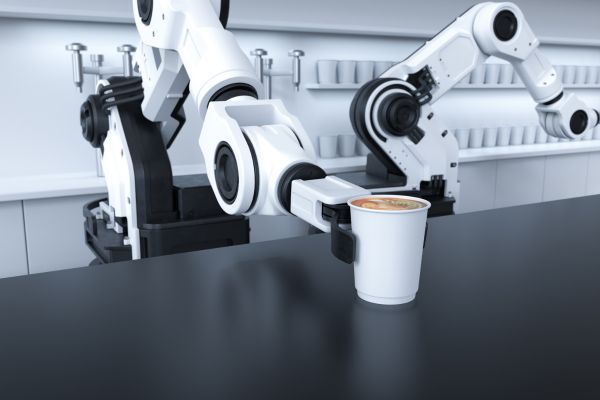
- Order Placement: Customers typically place their orders through digital interfaces, such as touchscreen kiosks or mobile apps. Some robot cafés also employ waitstaff robots to assist with order-taking.
- Food Preparation: In the kitchen, robotic arms, and automated systems handle the food preparation process. This may include tasks like brewing coffee, assembling sandwiches, or even cooking specific dishes, depending on the café's specialization.
- Delivery by Robots: Once the orders are prepared, dedicated delivery robots or conveyor belt systems transport the food and beverages to customers' tables. These robots navigate through the café, avoiding obstacles and ensuring efficient service.
- Interactive Features: Some robot cafés incorporate interactive features, such as robot entertainers or servers that engage with customers. This adds an element of entertainment to the dining experience.
What's Interesting About Them:
- Novelty and Entertainment: The presence of robots in cafés adds an element of novelty and entertainment. Customers enjoy the unique experience of having robots take their orders, prepare their food, and even serve them.
- Efficiency and Precision: Robot cafés often boast high levels of efficiency and precision in food preparation and service. Robots can consistently follow recipes, ensuring uniform quality and reducing the margin for human error.
- Customization and Personalization: Some robot cafés offer customization options through digital interfaces, allowing customers to personalize their orders. This level of customization contributes to a more tailored dining experience.
Weak Point:
A potential weak point lies in the potential limitation of human touch and personalized service. While the efficiency of robots is impressive, some customers may miss the warmth and personal interaction that human staff can provide in a traditional café setting.
What's Next:
The future of robot cafés involves advancements in artificial intelligence, robotics, and human-robot interaction. Expect more sophisticated robots capable of handling complex food preparation tasks, improved natural language processing for enhanced customer interaction, and increased integration with other smart technologies to create a seamless and enjoyable dining experience. Additionally, the development of robot cafés that emphasize sustainability and eco-friendly practices may become a growing trend in the industry.
Transportation
Self-Driving Cars: Transforming Transportation with Autonomy
How Do Self-Driving Cars Work?
Self-driving cars, also known as autonomous vehicles, represent a groundbreaking advancement in the field of transportation. These vehicles leverage a combination of sensors, cameras, radar, lidar, and advanced algorithms to navigate and operate without direct human intervention.

- Sensor Fusion: Self-driving cars use a combination of sensors to gather information about their surroundings. This includes cameras for visual data, radar for detecting objects, lidar for mapping the environment in 3D, and GPS for navigation.
- Mapping and Localization: Autonomous vehicles rely on detailed maps and real-time localization to understand their position in the environment. This enables them to navigate accurately and make informed decisions about their route.
- Decision-Making Algorithms: Advanced algorithms process the data collected from sensors, interpret traffic conditions, identify obstacles, and make split-second decisions on actions such as accelerating, braking, or changing lanes.
- Communication Networks: Some self-driving cars are designed to communicate with each other and with infrastructure elements, such as traffic lights and road signs. This connectivity enhances coordination and safety in traffic.
What's Interesting About Them:
- Safety Improvements: Self-driving cars have the potential to significantly reduce accidents caused by human errors, such as distracted driving or impaired judgment. The sophisticated sensor systems and algorithms prioritize safety in various driving conditions.
- Increased Accessibility: Autonomous vehicles have the potential to increase accessibility for individuals who are unable to drive due to age, disability, or other reasons. This technology could enhance mobility and independence for a broader range of people.
- Efficiency and Traffic Flow: Self-driving cars can optimize traffic flow by communicating with each other and adjusting speeds in real-time. This has the potential to reduce congestion, shorten commute times, and improve overall transportation efficiency.
Weak Point:
A notable weak point is the current limitations in handling complex or unpredictable driving scenarios, such as adverse weather conditions, unique road situations, or unexpected obstacles. Further advancements in technology and rigorous testing are needed to address these challenges.
What's Next:
The future of self-driving cars involves continued advancements in artificial intelligence, sensor technologies, and regulatory frameworks. Expect improved capabilities in handling diverse driving conditions, enhanced safety features, and increased public acceptance. The integration of self-driving technology into various modes of transportation, such as ride-sharing and public transit, is also likely to be a focus for future developments.
Last Thoughts
As we anticipate the future of robotics, envision a world where artificial intelligence, machine learning, and advanced sensor technologies continue to push the boundaries of what's possible. Whether it's the precision of surgical robots, the adaptability of educational tools, or the efficiency of warehouse automation, the evolution of robotics promises exciting developments that will shape our future experiences. So Stay Curious!
Let's get you on the right track! Read more here about Robots.
Recent Posts
-
Troubleshooting Common Water Pump Problems: A Step-by-Step Guide
Introduction Water pumps are essential components in a wide range of settings, from homes and farms …1st Apr 2025 -
Boosting Agricultural Efficiency: Centrifugal Water Pumps
1. Introduction Agricultural irrigation is crucial in maintaining consistent crop growth and ensurin …28th Mar 2025 -
The Ultimate Guide to Launching a Robotic Coffee Business
The Ultimate Guide to Launching a Robotic Coffee BusinessTable of ContentSEOFAQ - CatalogSales Advic …28th Mar 2025

